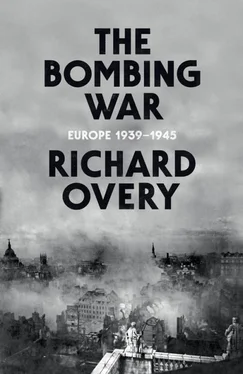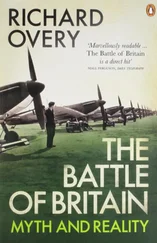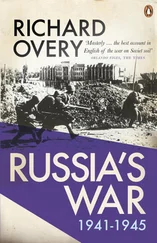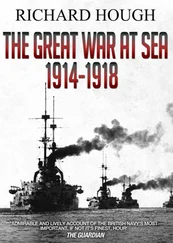1 ...6 7 8 10 11 12 ...254 The German bombing, sporadic and limited though it was, helped give birth not only to an integrated air defence system, but also to what would have been the first strategic air offensive. The first anti-aircraft guns were in place across south-east England by spring 1915. The air defences were established formally as the Air Defence of Great Britain. At the heart of the system was the London Air Defence Area, set up in July 1917 under Maj. General Edward Ashmore. By the summer of 1918 the defence boasted 250 anti-aircraft guns (based on artillery developed on the Western Front), 323 searchlights, eight fighter squadrons for day-and-night interception and a personnel of 17,000. To track incoming aircraft, observer cordons were set up some 50 miles from vulnerable areas, manned by soldiers and policemen. 7In the threatened cities a primitive civil defence structure was established in 1917, with improvised shelters, air-raid wardens and policemen armed with whistles for sounding the alarm. The system was seldom needed over the last two years of war, and not at all after the last raids in May 1918, but it created a precedent that was later revived in the 1930s when lessons from the Great War were needed for British air-raid precautions planning. The raids gave rise to moments of panic in the bombed towns; in the east coast port of Hull, an easy Zeppelin target, a portion of the population trekked out of the city to the surrounding countryside, as they were to do during the next war. In London, estimates of those who sought shelter in the Underground ranged from 100,000 to 300,000. 8
The air raiding was widely condemned as a vicious and cowardly attack on the innocent. The final death toll of 1,239 from all Zeppelin and bomber raids included 366 women and 252 children. Bombing represented, according to The Times , ‘relapses into barbarism’, a language regularly applied to aerial bombing for the next twenty-five years. 9There were widespread appeals for retaliation, using much the same language of moral justification that would later be used during the Blitz, and there followed a number of deliberate reprisal raids. The government, however, wanted a more systematic response. An Air Board, appointed in 1916, planned to create a separate, independent air force and, with the government’s approval, to use it to undertake a systematic long-range bombing offensive against German military and economic targets within the limited range of the existing aircraft. In July 1917 the South African soldier and politician, Field Marshal Jan Smuts, visiting London during an Imperial Conference, was invited by the prime minister, David Lloyd George, to produce recommendations for organizing Britain’s air effort. Smuts suggested the establishment of a separate air ministry and air force and also endorsed the idea of long-range attacks against the enemy home front. 10The idea was accepted and an initial bombing plan was drawn up by Lord Tiverton, a senior Royal Flying Corps staff officer, at the request of the first chief of the newly created air staff, Sir Frederick Sykes. The industrial plan picked out German iron and steel, chemicals, the aero-engine and magneto industries as the key objectives, and from October 1917 the RFC VIII Brigade, commanded by Lieutenant Colonel Cyril Newall (the future chief of the air staff in the late 1930s), began a limited assault on the cities that housed them. 11
The force mainly composed of light De Havilland DH-9 bombers had little success. Crew had an average of 17 hours flying experience, were poorly trained for accurate navigation and target-finding, and carried 250-lb and 500-lb bombs that were later found to have inflicted little damage. The newly formed Air Policy Committee encouraged the crews to ‘attack the important towns systematically’ if they could not find a target, with the object of creating widespread disruption and demoralizing the workforce. 12This offensive was also met by an effective German air defence system which, like the British, was first activated in 1915 in response to Allied incursions. The same year an Air Warning Service ( Flugmeldedienst ) was established using observation aircraft and ground-based observation posts. By 1917, when heavier Allied raids began, the defensive system combined interceptor aircraft and an extensive network of 400 searchlights and 1,200 anti-aircraft guns of different calibres. To hamper night-time raids, an extensive blackout was introduced in western Germany, together with illuminated fake targets. As in Britain, local civil defence measures were introduced to protect the civilian population. In total, 746 were killed and 1,843 injured; as in Britain, German propaganda deplored the ‘frightfulness’ ( Schrecklichkeit ) of attacks against the defenceless civilian population. 13
The intention to mount a serious bombing offensive against Germany, as an indirect contribution to the ground war, finally resulted in April 1918 in the establishment of the Royal Air Force, a merger of the Royal Flying Corps and the Royal Naval Air Service. A Cabinet ruling on 13 May 1918 stressed that the force’s independence was deliberately linked to the purpose ‘of carrying out bombing raids on Germany on a large scale’. To underline this commitment, an integral element of the new RAF was activated on 5 June as the Independent Air Force (to distinguish it from the RAF aircraft still supporting the Army) and placed under the command of General (later Marshal of the Royal Air Force) Sir Hugh Trenchard. 14Two weeks later an elaborate review of British air strategy was submitted to the War Cabinet by the RAF staff which laid out the principles on which all subsequent air offensives were to be based. Air power, it was suggested, was the most probable and efficient way of securing peace by attacking the ‘root industries’ of the enemy and ‘the moral [sic] of his nation’. A detailed list of precise targets in the Ruhr-Rhineland industrial region was drawn up based on Tiverton’s original plan; in cases when these could not be attacked, bombers were to raid ‘densely populated industrial centres’ in order ‘to destroy the morale of the operatives’. 15
The opportunity to test what a bomber force could do was never realized. In June the Independent Force dropped just 70 tons of bombs on Germany, in August only 100, in the last weeks of war a further 370 tons. Of this quantity most were dropped on tactical targets, either enemy airfields or communications serving the front line. For example, the thirteen attacks carried out during 1918 on the Baden town of Offenburg, within easy range of British bombers, were almost all aimed at the railway station or rail lines. 16Overall the strategic force dropped just 8 per cent of the tonnage of bombs dropped by British aircraft throughout the war. Only 172 of its 650 mainly small-scale raids were on the German homeland and losses were high, 458 aircraft in total. 17The French High Command was unenthusiastic about longer-range bombing, and the American and Italian bomber units that were supposed to join an expanded Inter-Allied Independent Force, formed in October 1918, had no time to see serious action. 18Like Wells’s science-fiction fantasies, the independent bombing offensive was more imagined than real.
The post-war assessments of the bombing of Germany carried out by a British Bombing Commission and a United States Bombing Survey in 1919 indicated very modest material achievements. But there were to be exaggerated expectations of the probable effect of bombing on home morale. Trenchard famously remarked that the moral, or psychological, effect of bombing was twenty times greater than the material effect, though there was little evidence to confirm this beyond occasional but temporary moments of panic during the war in British, French and German cities, and the class prejudices of those who asserted it. 19The report on the 1923 annual RAF exercises, with Trenchard now chief of the air staff, assumed that modern war was ‘a contest of morale’, in which the febrile urban crowd would prove to be ‘infinitely more susceptible to collapse’. 20Much the same argument was formulated by the Italian general, Giulio Douhet, whose Command of the Air ( Il dominio dell’aria ) has become one of the classics of air-power theory. He argued that the nature of warfare had been changed irrevocably by the advent of the aeroplane, to the detriment of armies and navies. Future wars, he argued, would be based on the rapid destruction of the enemy’s air force, in order to attack, as swiftly and ruthlessly as possible, the enemy civilian economy and population. The temporary inhumanity (Douhet also advocated using gas or bacteriological agents) was designed to make wars short and sharp and, by implication, at lower human cost than the long war of attrition that Europe had just experienced. ‘A man who is fighting a life-and-death struggle – as all wars are nowadays – has the right,’ Douhet claimed, ‘to use any means to keep his life.’ 21Douhet’s vision of future war owed something to Wells – ‘This is a dark and bloody picture I am drawing for you’ – but it was first and foremost an expression of what soon came to be termed ‘total war’. 22
Читать дальше
Конец ознакомительного отрывка
Купить книгу












